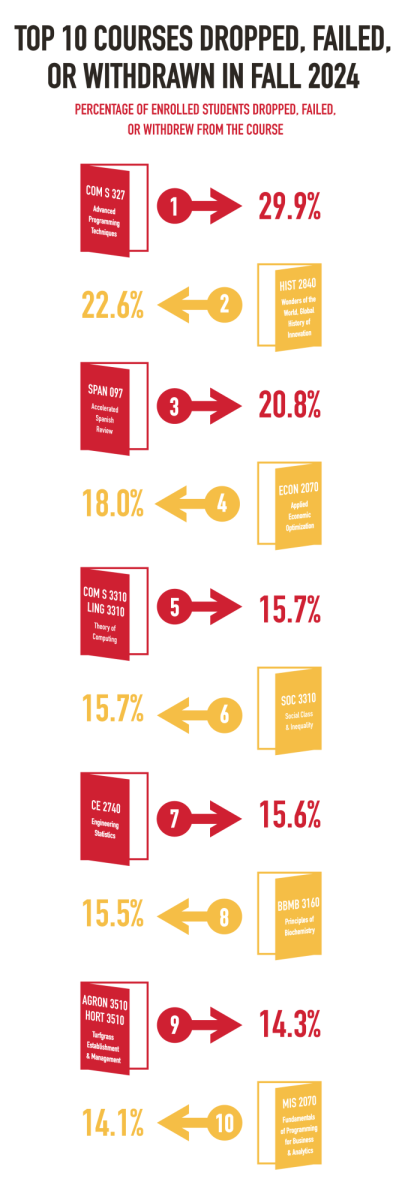Get healthier by lowering salt intake
February 7, 2011
New Year’s resolutions of losing weight and getting healthy have been shoved upon us just as much as the never-ending snowstorms in Ames. Taking the first step to getting healthy can be as simple as changing the way one’s food is prepared.
The Food and Drug Administration is requesting that all Americans reduce their salt intake. New FDA guidelines suggest that the daily sodium intake is 1,500 milligrams, equivalent to half a teaspoon of salt per day.
ISU clinician Sally Barclay offered advice on simple, easy ways to cut back on sodium intake.
“Limit use of sodium-laden condiments. Soy sauce, salad dressings, sauces, dips, ketchup, mustard and relish all contain sodium,” she said. “Look for lower sodium versions or dilute regular versions; for instance, I dilute sodium sauce 50 percent with water.”
Eating more fresh fruits and vegetables rather than canned varieties will cut one’s salt intake drastically, Barclay explained. While fresh produce is the best option, college students watching their wallets can purchase frozen fruits and vegetables without gaining the sodium.
Choosing “no salt added canned vegetables and using herbs and spices to season them” is also an excellent way to obtain one’s recommended daily intake of fruits and vegetables without increasing sodium, Barclay said.
“Consider a sodium-free substitute for shaking on your food and adding during cooking — either pepper alone or a sodium-free blend of spices such as Mrs. Dash, which comes in several varieties,” Barclay said.
“When cooking, flavor foods with herbs and spices — which are plants that offer beneficial nutrients and antioxidants — leave out the salt altogether or add half the amount called for in the recipe,” Barclay said. “Gradually your palate will get used to the less salty taste and learn to appreciate the other flavors of the food and seasonings.”
If one should accidently “overdose” on salt for one day, Barclay explained that the best way to counterbalance an increase in sodium is by consuming potassium or calcium-rich foods.
Students can find potassium in bananas, raisins, baked potatoes, yogurt and lima beans to name a few. A few nontraditional ways students can increase calcium is by eating fortified cereals, soy milk, sardines, tofu and salmon.
For more information on dietary guidelines, visit www.health.gov/dietaryguidelines.






